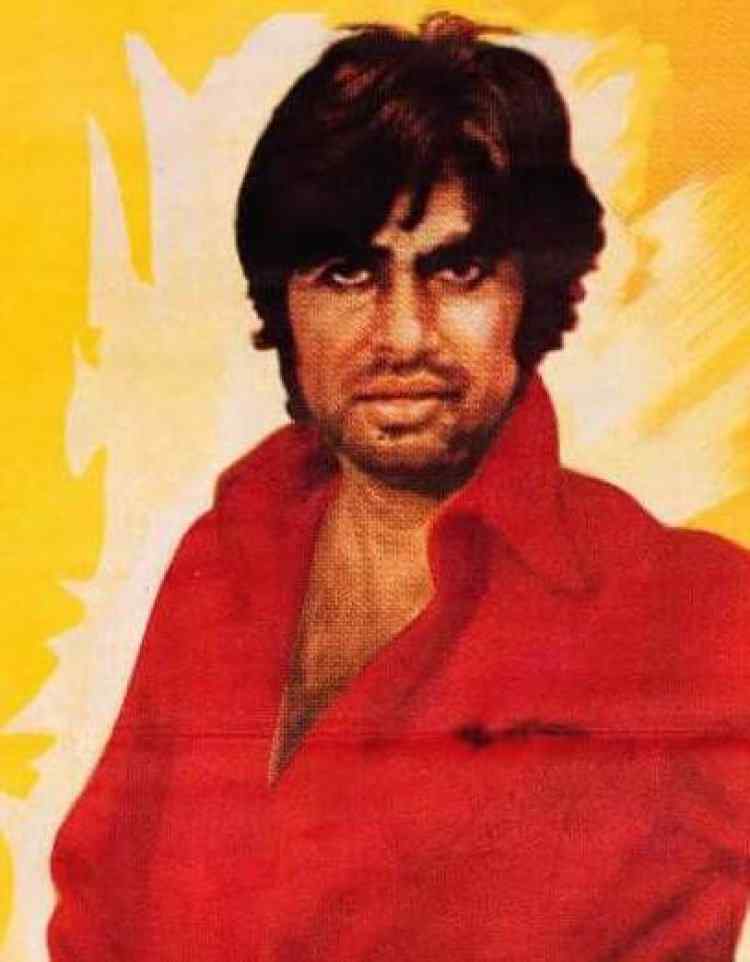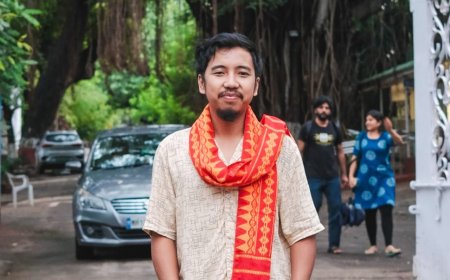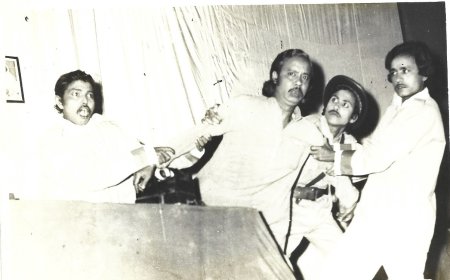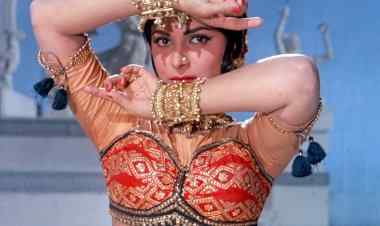AMITABH BACHCHAN AS “THE OTHER” IN DON (1978)
Dr. Shoma A. Chatterji pens an insightful discourse on the illustrious persona of Amitabh Bachchan, to mark his 81st birthday.

Don ko pakadna mukshkil hi nahin, namumkin hai
The word Don is a title for men in Spanish, and Don is a term for the head of a mafia family. Don has a few other senses as a noun. Don sounded to be quite silly a title to begin with since no one had the slightest clue that it would turn out to become a cult film. “‘Don’ was a title that no one in the market approved of. They never understood what it meant and never felt that a name such as ‘Don’ was material for the title of a Hindi film. In fact if truth be told… for many it was quite an amusing title,” Bachchan wrote on his blog while celebrating the 41st anniversary of the film. He added “They were carrying the name ‘Daw’ which phonetically sounded much like that brand of undergarment in the market current during those times. There was consternation in titling a film that conveyed an undergarment.”
Bachchan’s intense performance in Don is among his most iconic.
In his acting career of over fifty years, Amitabh Bachchan has delivered memorable films, famous roles and dialogues that have become part of folklore. But Don became a sleeper hit not only for his acting but for its songs composed by Kalyanji-Anandji in their most outstanding music compositions. The Chandra Barot directorial crime-thriller featured Amitabh Bachhan in double roles. The story spins around a lawbreaker, his break from the police, and how his lookalike took his place to help the police uncover the entire gang.[i]
“The Other” identity of Bachchan is not the result of exclusion or marginalization linked to demarcation according to “groups” but the result of carving an individual identity both as star, actor and human being in every given film the script of which either revolved around him or he made it revolve around him purely through his acting and his star charisma.
This being “The Other” in Don is not the result of any sectarian tension based on caste, class or age. It is based on professional differences between law and crime. But if crime and punishment as agencies – the criminal Don on one side pitted against the police force, or “agencies of punishment” on the other. One might argue that in that case, the character portrayed by Bachchan in his other action-centric films would also be classified as “the sectarian Other.” Not really, because Don defines “the other” as a single individual but as one individual split into three different personas which Bachchan executes with so much conviction other actors might never have matched way back in the late 1970s.
The first of these three is Don, the enigmatic character whose name is completely merged into his profession, and also the fear and awe he generates through the characterization and the performance. He is suave, sophisticated, polished, elegant and exudes enormous sex appeal through a distinct masculinity. He dresses impeccably and speaks very little even when he is called upon to speak. When a seductively dressed Kamini (Helen) steps into his hotel room with sensuous advances through a song-dance number, he gives her the short shrift simply through his body language and his facial expressions which spell out “remain distanced” and “I am aloof” all at the same time. Even when he is shot down in the car by D’Silva, he maintains his dignity and tries to pull the trigger on him but collapses on the back seat, leaving D’Silva to find out that he is dead. He is buried at the local Church’s burial ground secretly as D’Silva being a Christian himself, has no clue which faith Don was born into or believed in and decided to bury him in complete secrecy. The only ones who are aware of Don's death are DSP D'Silva himself, the graveyard priest, and his followers. This marks the end to the life and career of Don, the elusive, intriguing criminal who evaded capture till the last minute when destiny came in the way and he was killed in the same violent way he had killed Ramesh and others.
With Don dead, the mafia group he was believed to have headed, D’Silva is in a soup as he is now left with no clue about the gang Don headed with success. He keeps Don’s death a complete secret from everyone in the police force and decides to find someone who can replace the original Don and pretend to be Don.
Vijay, who D’Silva discovers as the identical persona of Don, is not given much background history and so is Don. But Vijay, unlike the expressionless, emotionless Don, has a very humane streak as he has rescued two little children whose father was missing and is trying to give them a proper childhood through the little money he earns as a street performer. He is a fun-loving, paan-chewing rustic-appearing young man who does not seem to care that he lives in poverty but his entire aim in focused on giving the ‘orphan’ kids a good education and childhood.
The face, body and height are the only things in common between Vijay and Don. Vijay is crude, rustic, unpolished and has a never-care attitude towards life and people. He is dressed crudely when we see him first. D’Silva recalls having seen a street performer singing away whose looks were identical with Don. So he sets out searching for this look alike. We are introduced to this funny character in a street square performing a song number that goes ee hai Bambai nagariya tu dekh babuya with the two kids he has ‘adopted’ with a few accompanists on old instruments. He is dressed in a pink shirt, a checked lungi wrapped around his waist. His hair, parted at the centre has lots of oil, a white tika adorns his forehead, his eyes are smeared with surma and we see him dancing away merrily while the two kids keep clapping and cheering and the dancing site shifts to a beach with other hawkers selling picture postcards on the beach. Perhaps, this suggests the way he performs at different sites to different audiences and sits down to count the day’s meager takings along with the two kids. The signature of his identity is his addiction to paan, the betel leaf folded in a particular way and stuffed with special spices pinned with a small cardamom. But this is more evident when he does the other number khaike paan Benaraswalla in which we are shown the merging of the dead Don and the living Vijay into the same persona now called Don for good.[ii]
Contrast this with the song-dance number Don performs at the party on the song that actually introduces his true personality. Arey diwano, mujhe pehchano, kahan se aya hai yeh Don shows us the original Don dressed suavely in a beige coat covering a black, sleeveless jacket over a white, high-collared shirt, a yellow bow-tie and black trousers. It may be a fashion designer’s nightmare today but during the late 1970s, it was not and was considered sophisticated. At other times, Don also wears a stylish pair of glares perhaps so that his eyes do not give away his intentions. His dance is quite stylish and he changes lady partners during the dance without being affected by their closeness while the girls are quite smitten by his lack of attention.
In the seductive song-dance number yeh mera dil pyar ka diwana, we meet Don as a very aloof and distanced man getting ready for a party and looking at the advances Kamini is making with intense suspicion. He puts his checked coat on top of a pista green shirt but Kamini takes it off as a part of her seductive game but Don is completely indifferent to her shapely thighs revealed through a slit gown or her cleavage and keeps following her movements as she leaves the room towards a window looking out at the garden below. Here is Bachchan in a very negative character expressed as “The Other” as he has the bearing, the looks and the sexual vibes that befit a positive hero which he is most certainly not.
The question here is – why did Vijay agree to D’Silva’s request to replace Don at all? How is it that it did not scare him to step into the shoes of a sophisticated, marked criminal whose life was constantly in danger? The answer is simple – he asked for funding for the education of the two small kids whose father had been badly hurt in a trapeze accident and had gone missing. D’Silva readily agrees to do the needful and the ball to convert the uneducated, crude Vijay to the sophisticated Don is now in D’Silva’s court. But there is a catch. No one either from the police force or from among the gang he led have any knowledge about the real Don having died and another man having taken his place. Vijay is a bit scared about this but the lure of being able to fund the two kids’ education and upbringing makes him leave his fears behind and jump into the risks the role-playing entails.
Vijay sometimes misses his old life and his old friends and when, by chance, he happens to arrive at his former dera where everyone is happy to see him, he gets back into his former self by tying a pink gamcha across his head on top of his milk white shirt worn with the usual sleeveless black jacket and well-tailored black trousers. But the paan in his mouth with the red liquid sticking out gives him and the audience a sense of his homesickness. With all the affluence his dramatized metamorphosis has given him, he has not lost touch with his roots and still loves to savour paan which he had given up. This gives a completely different dimension to the song number khaike paan Benareswalla khul jaaye bandh akal kaa taala which remains a cult song belted out by Kishore Kumar.
There is an anecdote that relates how Bachchan worked hard to give the song sequence a feel of the real. Amitabh ate 40 paans to get the scene right. The 'chuna' (white lime) used in the paan hurt his tongue so much that he remained unable to speak over the next day. Towards the end of the film, when his true identity as Vijay is exposed both to the police and to the gang members including the chief Malik (Om Shivpuri) he remains in his “Don” attire but begins to chew paans again. This defines the third face of “the other” which is a happy blend of the polished villain and the simple but intelligent hero. It is a funny sight – a well-dressed man suddenly getting into action through jumps, fights, trigger-pulling and all that stuff with paans stuck in his mouth! So, where is the “angry young man” here? Vijay as Don or as Vijay, adds that much-needed dose of humour and satire rolled into one in a way the common man in the audience will not only understand easily but also appreciate.
The metamorphosis Vijay goes through to “become” Don with the training given by D’Silva is raced through and ends before we can quite understand it happening. But one can also take it as pointer to Vijay’s ability to pick up a kind of life he never bargained for and did not quite want but does it for a humane cause. While he jumps over walls, fights with his bare hands, is very dynamic with his body, he basically is a peace-loving, naïve and simple young man who naturally falls in love with the very sophisticated and modern Roma (Zeenat Aman) who, unlike simpering leading ladies in normal films, trains herself in karate and judo from an accomplished trainer (Jairaj) to prep herself to avenge her brother’s murder by Don.
The double role gives both the evil and the good the same face and there was hardly anything that could differentiate the two. Almost all the films that Salim-Javed wrote together have a high degree of timelessness attached and though some tropes might look dated they continue to inspire filmmakers and writers even today.[iii]
Don throws up the unique example of “The Other” Amitabh Bachchan. The three dimensions of his masculinity and personhood prove that though human beings have a natural tendency to make categorical distinctions, the categories themselves and meanings associated with those categories are socially constructed rather than natural or organic. Don, the film, proves this through the three personas the script creates intelligently. Especially with reference to Vijay who metamorphoses from a crude, unpolished, uneducated and untrained public performer to unwittingly get under the skin of a negative criminal who is dead. One sees that in both these dimensions, his roles are socially constructed. The criminal Don is not given any history and nor is the good street performer Vijay. But the fact that they can, with training, easily slip into a role they never anticipated proves that both roles could equally be socially deconstructed. Yet, the basic goodness in Vijay remains unchanged and constant. He even gets into a terrible fight with the real father of the two kids (Pran) as he does not know that this man is their real father. In other words, the groupism that “othering” generally implies and is defined by, does have exceptions, and Don, in which Bachchan plays three roles and not one, is classic proof of this belief.
***
Author’s Note: This is an excerpt from this author’s forthcoming book, tentatively titled AMITABH BACHCHAN – REDEFINED AS ‘THE OTHER’ to be published by Vitasta Books, Delhi.
[i] https://www.babushahi.com/full-news.php?id=145150&headline=Amitabh-Bachchan%27s-classic-%27Don%27-clocks-44-years;-take-a-look-at-these-interesting-facts
[ii] This song was originally composed and created for a song number for the Dev Anand-starrer Benarasi Babu (1973) but was dropped later on because Dev Ana0nd found it quite tacky.
[iii] Gautam Chintamani : How Big B became the Don of Bollywood with one film, https://www.dailyo.in/arts/don-amitabh-bachchan-zanjeer-bollywood-salim-khan-javed-akhtar-chandra-barot-10576?onetap=true, May 12, 2016
What's Your Reaction?


































































